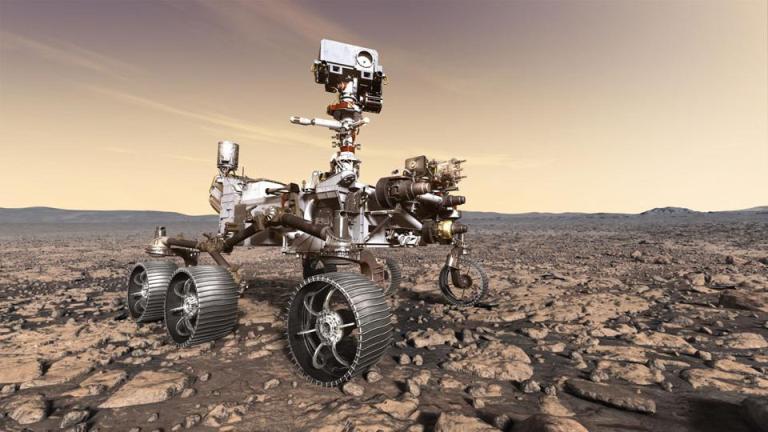
Mars Rover technologies could be in your next car
Life Desk
Published:06 Apr 2021, 03:00 PM

Mars Rover technologies could be in your next car
NASA just landed its latest Mars rover, named Perseverance, to search for signs of microbial life, and help pave the way for human exploration. It’s the space agency’s fifth rover, and packs technology that we could see in the not-too-distant-future on Earth-bound vehicles.
To be sure, we’ve already seen many NASA inventions become common in our everyday rides. These include the GPS systems that have become essential to navigate us from the proverbial point A to point B. The tire-pressure monitor required on all new vehicles was created for the Space Shuttle Program to turn air pressure levels into electrical signals that could be read by a computer. Nissan leveraged NASA knowledge to develop its articulated Zero Gravity seats that use 14 pressure points to provide continuous support from the pelvis to the chest, and are said to both reduce muscular and spinal loads, and improve blood flow to minimize fatigue over long trips.
Here’s a look five Mars rover technologies that are most likely to seen on the nation’s roads in the years ahead, with information sourced from NASA and Select Car Leasing in the UK:
Artificial Intelligence
NASA developed an AI “brain” for the rovers using advanced neural networks and deep learning algorhythms that allow them to tackle Mars’ tough terrain without instructions from Mission Control. This is essential as it takes about 25 minutes for signals to reach the red planet from Earth, and vice-versa. This is also important to tomorrow’s autonomous cars as it gives them the ability to make real-time decisions regarding navigation and to avoid collisions with other vehicles and pedestrians.
Doppler Lidar
Since landing a rover on Mars is difficult at best, NASA is developing an advanced form of Doppler lidar that would send three continuous laser beams down to the surface. The system would then measure with ultimate precision how long it takes the beams to be reflected back, and would then apply the Doppler effect in three-dimensional space to proceed safely. It’s similar to technology being used in weather forecasting for accurate wind measurement. The system could well help future adaptive cruise control systems and self-driving vehicles weave their way in and out of high-speed traffic safely.
Unbreakable Tires
Since the red planet is far out of AAA’s operating zone, it’s impossible to change a rover’s worn tire or one that’s become damaged rover Mars’ rugged terrain. Thus, NASA developed a set of tires with advanced shape memory that enables them to snap back to their original profile after traversing ruts and rocks. It’s also lighter, safer, and ultimately puncture-resistant, and we could well see the technology used to keep our cars rolling along at some point.
Wear-Repairing Lubricants
Like having a tire replaced, there’s no way to give a rover an oil change on Mars. To that end, NASA commissioned researcher Pavlo “Pasha” Rudenko to develop a super-lubricant that could withstand the rigors of keeping the vehicles in working order under adverse conditions. The solution was a lubricant that contains diamond-like nano flakes that would not only help prevent wear, but reverse it. It’s yet to find its way into a rover, but Rudenko formed a company called TriboTEX to leverage the concept for an aftermarket engine additive of the same name. It’s purported to boost performance, improve fuel economy, and extend engine life.
Flying Cars
There are already several flying cars in development down here on Earth that pack a propeller, but as we learned via the NASA website the Perseverance is the first Mars rover to pack a deployable helicopter attached to its underbelly. While the rover itself won’t become airborne, the device will be used to test the potential for flight in the thin Martian air. If it works, it will help NASA personnel decide which directions to send the Perseverance rover to explore. And it’s not out of the realm of possibility that a future rover might be able to take to the Martian skies itself.